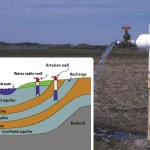
Tag Archives soil conditions

Benchmarking soil health in Alberta
Researchers at the Chinook Applied Research Association’s Soil Health Lab have adapted a soil health assessment from Cornell University to evaluate Alberta soils

Measuring the components of healthy soil in Alberta
Part 1 of 2: Soil health more than just its chemical properties, according to the Alberta Soil Health Benchmark Report

One does not simply measure soil health
Agronomy Management: Just analyzing soil samples won’t give you the big picture

Precision ag on Blackstrap farm
Extracting a soil sample to help identify a problem

Artesian wells are not always good
Artesian wells are amazing phenomena. But they can cause salinity in the soil
Farming your marginal land
Pulling marginal acres into production may look like an attractive proposition. But there are strings attached

The profit in strip till
There is increasing interest in strip till. When considering it for your farm, think about profit and conservation, not just yield


